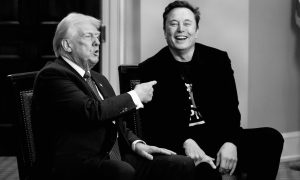News
SpaceX expands Starlink constellation amid surging global demand
SpaceX launched Starlink 6-93, adding 28 satellites to its vast constellation. Starlink’s global role is only expanding.

SpaceX’s Starlink constellation expanded with a Falcon 9 launch on May 6, strengthening its role in global connectivity as demand surges and competition intensifies. The recent Falcon 9 launch is called SpaceX’s Starlink 6-93 mission.
SpaceX’s Falcon 9 rocket carried 28 Starlink satellites, adding to a network of over 7,200 satellites in low Earth orbit (LEO). It lifted off at 9:17 p.m. EDT from Cape Canaveral Space Force Station’s Launch Complex-40 in Florida.
Starlink’s critical role in connectivity was evident during a historic blackout across Spain and Portugal, where a power outage exposed weaknesses in traditional telecom networks. Mobile and internet users turned to Starlink in record numbers, driving a 35% usage surge. The Iberian Peninsula’s reliance on Starlink underscored its ability to provide reliable internet access when terrestrial systems falter.
The satellite broadband market is heating up. Amazon’s Project Kuiper has been pitted against SpaceX’s Starlink and telecom giants like AT&T and T-Mobile. Kuiper’s focus on underserved rural areas is similar to Starlink’s mission. However, SpaceX’s constellation is far ahead of the competition. Global interest in satellite communications is rising, driven by strategic and commercial needs.
Geopolitical shifts are also shaping the landscape. For instance, Ukraine is exploring Starlink alternatives with the European Union, while the German military, Bundeswehr, plans to build its own constellation for independent communications. Similar to Amazon’s Kuiper project, Ukraine, the EU, and Germany’s efforts face challenges in matching Starlink’s scale and operational maturity.
SpaceX’s latest launch from one of its two Space Coast facilities reinforces Starlink’s lead in delivering broadband to remote and crisis-affected regions. The Falcon 9’s precise deployment ensures continued growth of the constellation, serving a growing base of consumers, businesses, and governments worldwide.
As global demand for satellite connectivity surges, SpaceX’s Starlink 6-93 mission highlights its pivotal role in bridging connectivity gaps. Starlink’s expansion positions it as a cornerstone of the evolving satellite communications landscape, balancing innovation with geopolitical and market challenges.
News
Tesla is building Cortex 2.0 supercomputer facility in Giga Texas
The site was listed as the Central Campus Support facility, but recently, the filings have been updated as Cortex 2.0.

Tesla may already have a supercomputer cluster in the Giga Texas complex, but it seems like the electric vehicle maker is not done with its supercomputer plans just yet. Based on images taken of the Giga Texas complex recently, it appears that work is now underway to construct a new facility for Cortex 2.0, a companion to the site’s existing Cortex supercluster.
New Giga Texas Facilities
As per longtime Tesla Gigafactory Texas watcher Joe Tegtmeyer, Tesla has been constructing a facility on the North side of the complex for a few months now. Initially, the site was listed as the Central Campus Support facility, but recently, the filings have been updated as Cortex 2.0. So far, work is underway for the Cortex 2.0 building shell, though permits have already been filed for other parts of the upcoming facility.
The speed of the buildout for the Cortex 2.0 facility is rapid, with the drone operator estimating that the location may be operational as early as late this year. It would also not be surprising if Tesla ends up ramping its activities at Gigafactory Texas’ Cortex 2.0 supercomputer cluster sometime next year.
FSD Training and Beyond
Tesla’s heavy investments in its supercomputer clusters are expected to help the company develop and refine its self-driving system, which is currently deployed in non-autonomous form as Full Self-Driving (FSD) Supervised. Tesla is expected to launch a robotaxi service in Austin in a few weeks, though these vehicles are expected to use FSD Unsupervised, which would be fully autonomous.
Apart from FSD, Tesla’s Optimus program will likely require a substantial amount of computing power as well. Elon Musk has stated that Tesla should be able to build its first “legion” of Optimus robots this year, with production ramping next year. Considering these ambitious timelines, perhaps Giga Texas’ Cortex 2.0 facility would be fully busy as soon as it becomes operational.
Check out a recent drone flyover of the Giga Texas complex in the video below.
Elon Musk
Tesla Optimus dance video showcases the company’s quick progress
Elon Musk shares a new video of Tesla’s humanoid robot, Optimus, dancing with improved flexibility and control.

Elon Musk recently shared a Tesla Optimus dance video, showcasing the humanoid robot’s light feet and the company’s quick progress.
In 2021, Tesla announced it would develop a humanoid robot during AI Day. At the time, the company didn’t even have a prototype. To celebrate the announcement, a human dressed as a humanoid robot came out and danced for the crowd at the event. Fast forward a few years, and Tesla’s Optimus bot finally has some moves to show off.
The first time anyone got a real preview of Optimus was in 2022, when Tesla debuted semi-functional prototypes at AI Day. One Tesla Optimus bot walked on stage while another performed some arm movements. At the time, critics noted the Tesla Optimus bot’s reliance on teleoperation for some tasks.
By 2023, Tesla unveiled Optiumus Gen 2, demonstrating advanced tasks like sorting colored blocks, maintaining yoga poses, and some dancing. Tesla also noted that the robot’s hands improved to 11 degrees of freedom (DoF). Tesla Optimus hands in production units have 22 degrees of freedom.
Late last year, Tesla Optimus robots attended the company’s “We, Robot” event, performing tasks like serving drinks and interacting with people in the crowds. Teslarati played rock, paper, scissors with Optimus at “We, Robot.” The Tesla bots danced in synchronicity at the event with their arms and torsos.
Tesla’s progress with Optimus has been quite a ride over the past few years. Now Optimus can add to its dance moves with more flexibility and control over its legs. The recent Tesla Optimus dance video marks the beginning of the next phase for the humanoid robot: production.
According to Tesla’s Q1 2025 updated letter, the company has already started limited production of the Optimus bot at Tesla’s Fremont Factory. Elon Musk announced plans to produce over 1,000 units of Tesla Optimus for internal use in 2025 and external sales by 2026.
Elon Musk claims Tesla Optimus could be “more significant than Tesla’s vehicle business,” with a potential market value of $25 trillion. By automating low-skill, repetitive jobs, the Tesla bot could reshape economies, which Musk believes could lead to an “age of abundance” where goods and services are cheaper.
Investor's Corner
Rivian stock rises as analysts boost price targets post Q1 earnings
Rivian impressed with smaller-than-expected losses & strong revenue, pushing analysts to raise price targets.

Rivian stock is gaining traction as Wall Street analysts raise price targets following the electric vehicle (EV) maker’s first-quarter earnings report. Despite a dip after the announcement, optimism surrounds Rivian’s cost control and upcoming lower-priced cars.
Last week, Rivian reported a better-than-expected Q1 gross profit, surpassing Wall Street’s forecasts with adjusted losses of $0.48 per share against expectations of $0.92 per share. The company also reported a revenue of $1.24 billion compared to the $1.01 billion anticipated.
However, the EV automaker cut its 2025 delivery forecast and capital spending due to President Donald Trump’s tariffs. It explained that it is “not immune to the impacts of the global trade and economic environment.” RIVN stock dropped nearly 6% post-earnings, closing at $12.72 per share.
Wall Street remains upbeat about Rivian, citing progress toward launching lower-priced vehicles in 2026 and effective cost management. On Monday, Stifel analyst Stephen Gengaro raised his RIVN price target to $18 from $16, maintaining a “Buy” rating. He highlighted Rivian’s “solid progress” toward key milestones.
Conversely, Bernstein’s Daniel Roeska gave RIVN a “Sell” rating. However, Roeska also lifted his Rivian price target to $7.05 from $6.10, acknowledging “better” Q1 results. He warned that profitability remains distant and hinges on multiple product launches by the decade’s end.
Overall, Wall Street’s average price target for RIVN climbed from $14.18 to $14.31, a modest 13-cent increase reflecting positive sentiment. About one-third of analysts covering Rivian rate it a Buy, compared to the S&P 500’s average Buy-rating ratio of 55%.
On Monday, Rivian stock rose 2.7% to $14.64, slightly trailing the S&P 500 and Dow Jones Industrial Average, which gained 3.3% and 2.8%, respectively. The uptick may also stem from broader market gains tied to news of a temporary U.S.-China tariff suspension.
As Rivian navigates trade challenges and scales production at its Illinois factory, its Q1 performance and analyst support signal resilience. With lower-priced EVs on the horizon, Rivian’s strategic moves could bolster its position in the competitive EV market, offering investors cautious optimism for long-term growth.
-

 News1 week ago
News1 week agoTesla offers legacy Model Y owners an interesting promotion
-

 News5 days ago
News5 days agoTesla Cybertruck Range Extender gets canceled
-

 News2 weeks ago
News2 weeks agoTesla posts Semi factory update, shares new Semi logo design
-

 News2 weeks ago
News2 weeks agoLike it or not, the new Tesla Model Y is a big hit in China
-

 News2 weeks ago
News2 weeks agoBerlin Senator calls Tesla “Nazi” cars, pisses off Brandenburg because Giga Berlin is a giant employer
-

 News2 weeks ago
News2 weeks agoTesla China vehicle registrations rise 51% in April’s fourth week
-

 Elon Musk2 weeks ago
Elon Musk2 weeks agoElon Musk is now a remote DOGE worker: White House Chief of Staff
-

 Elon Musk2 weeks ago
Elon Musk2 weeks agoTesla fends off new attack that will hurt consumers more than anyone else





















